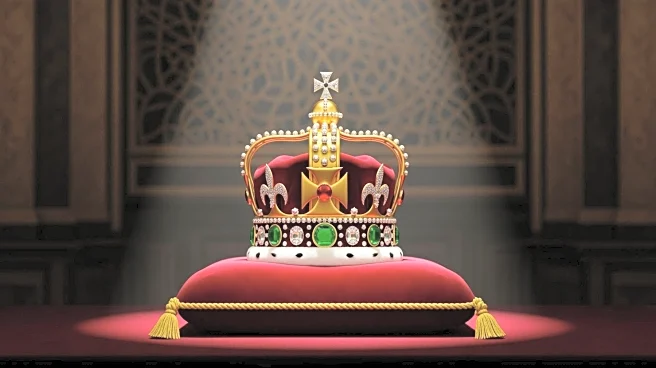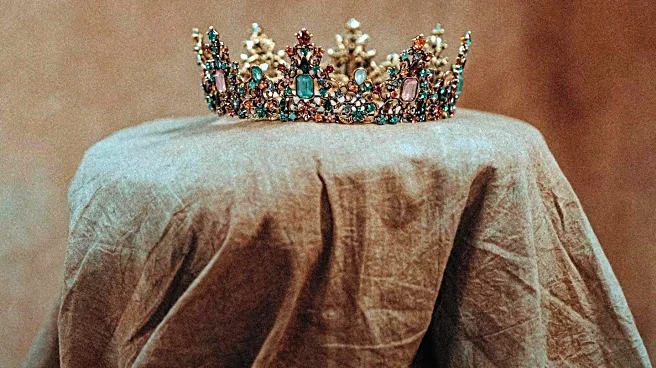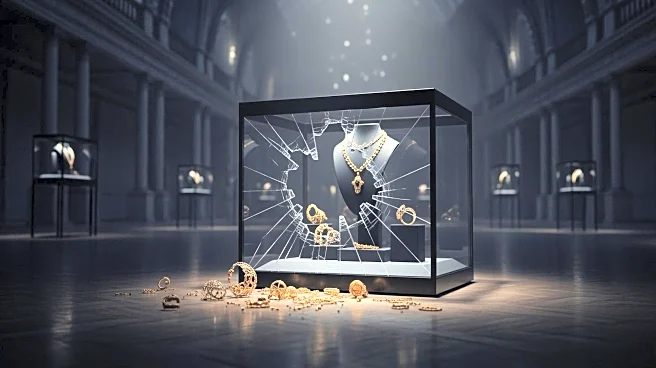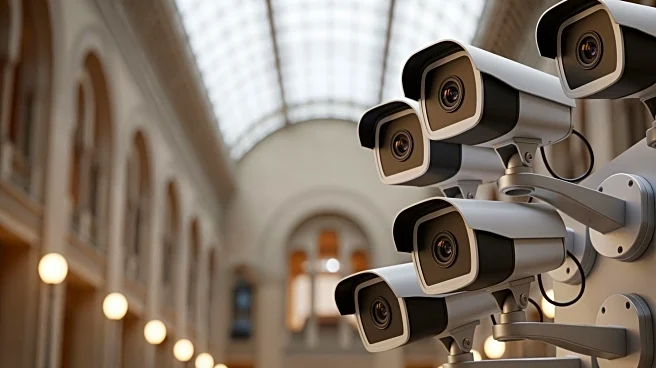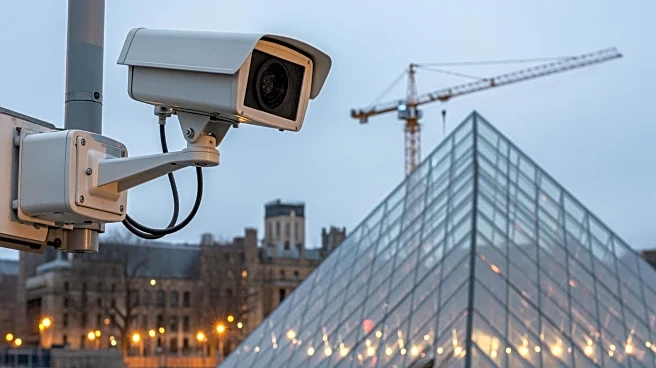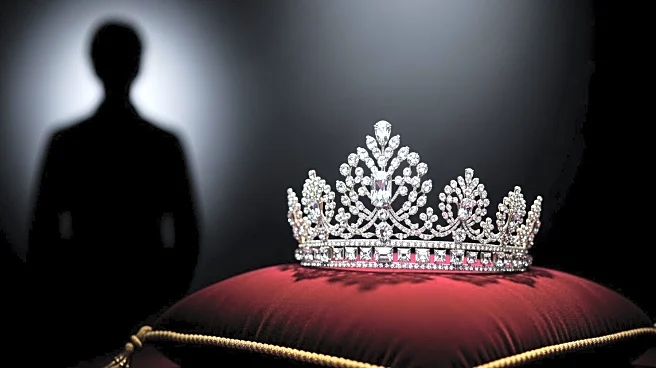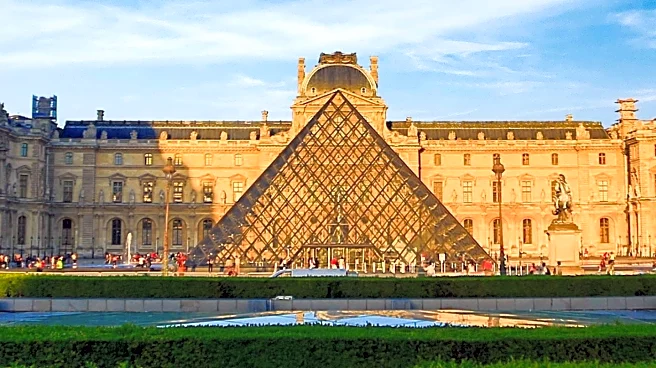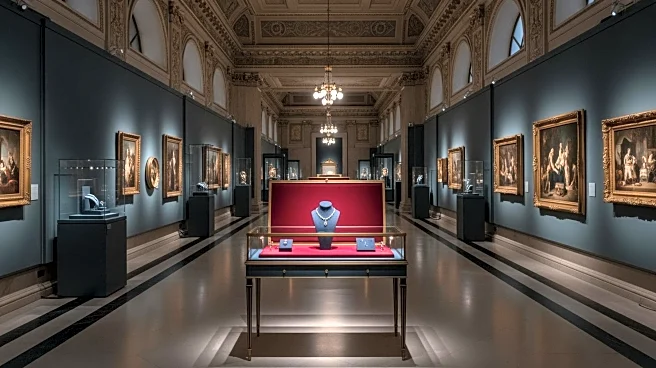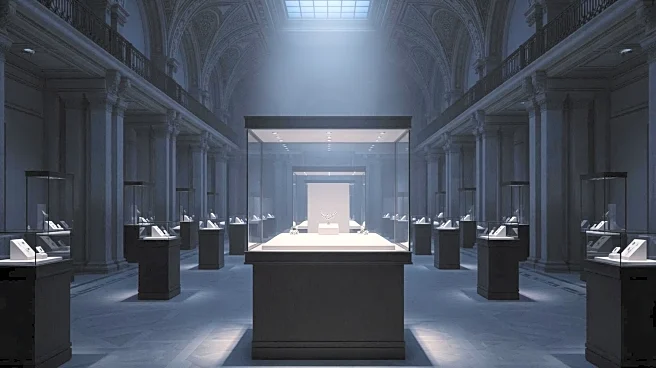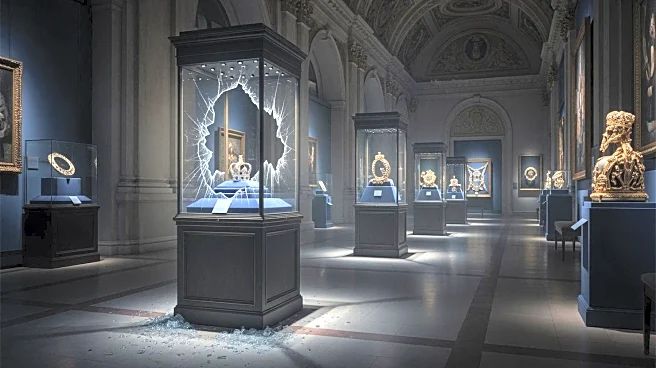What's Happening?
A daring theft at the Louvre Museum in Paris has left French authorities scrambling to recover stolen crown jewels valued at $102 million. The heist, which occurred in broad daylight, involved the theft of several significant pieces, including an emerald
necklace, earrings, two crowns, two brooches, a sapphire necklace, and a single earring. These jewels, dating back to the 19th century, are not only valuable in monetary terms but also hold immense historical significance as symbols of France's royal heritage. The theft has prompted a massive investigation led by Paris prosecutor Laure Beccuau, with around 100 investigators involved in the hunt for the suspects and the missing gems.
Why It's Important?
The theft of the crown jewels represents a significant blow to France's cultural heritage and national pride. These jewels are more than just valuable artifacts; they are symbols of France's historical wealth and power. The incident has raised concerns about security at one of the world's most famous museums, which has faced previous challenges such as overcrowding and outdated facilities. The loss of these jewels could have lasting implications for France's cultural identity and tourism industry, as they are likely to be dismantled and sold off, potentially vanishing from history forever.
What's Next?
French authorities are in a race against time to recover the stolen jewels before they are dismantled and sold on the black market. The investigation is focusing on identifying the suspects, who used a cherry picker to access the gallery and fled on motorbikes. The government is under pressure to enhance security measures at the Louvre and other cultural sites to prevent future incidents. The theft has also sparked a debate in the French Parliament about the country's ability to protect its cultural treasures, with calls for improved security protocols.
Beyond the Headlines
The theft highlights broader issues of cultural preservation and the challenges faced by museums in safeguarding their collections. It raises ethical questions about the responsibility of institutions to protect national heritage and the impact of such losses on cultural identity. The incident may prompt a reevaluation of security measures at museums worldwide, emphasizing the need for modernized facilities and protocols to prevent similar occurrences.
